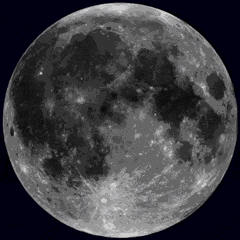<p >Chief of Staff of the Italian Navy Admiral Enrico Credendino on June 8 confirmed that service is considering procuring its first a nuclear-powered aircraft carrier, stating that this was part of a broader effort to address evolving maritime threats and energy requirements. The need for increased onboard power for cyber defence and drone warfare made the capacities of nuclear propulsion systems potentially valuable. The nuclear-powered carrier remains in the conceptual and feasibility assessment phase, although procurement of such a ship would align with the Southern European state’s evolving strategic doctrine which emphasis the need for continuous global deployments, enhanced mission readiness, and greater integration with allied forces across a wide range of theatres. The ability of Italian industry to develop a nuclear-powered aircraft carrier remains in serious question, with the only prior European attempt to produce such a ship having resulted in major performance issues and cost overruns, producing the French warship&nbsp;Charles De Gualle which has suffered from serious limitations. Italy’s nuclear industry is considerably less advanced, and it is likely that a nuclear powered aircraft carrier program would rely on significant support and technology transfers from either France or the United States.&nbsp;</p><p ><img src="https://militarywatchmagazine.com/m/articles/2025/06/10/article_6848b92567bf37_83144861.jpeg" title="French Carrier Charles De Gaulle and U.S. Navy Nimitz Class Supercarrier"></p><p >Only France and the United States have produced nuclear-powered aircraft carriers in the past, although the Soviet Union laid down one supercarrier with nuclear propulsion systems, the Ulyanovsk, which was not completed before the state’s disintegration. The Indian Navy and the British Royal Navy are among the services that previously considered procuring such ships, before focusing investments on conventionally powered vessels. The Chinese People’s Liberation Army is expected to begin to field nuclear-powered supercarriers in the 2030s, and is close to commissioning its first <a href="https://militarywatchmagazine.com/article/china-rival-ford-supercarriers-nears-service-entry-fujian" target="_blank">conventionally powered supercarrier</a>, the Fujian, into service. Although multiple Russian nuclear-powered supercarrier designs have been pitched to the country’s defence ministry, none have been financed. Other than aircraft carriers, the U.S., France, Britain, India, China and Russia all produce nuclear-powered submarines, with North Korea expected to <a href="https://militarywatchmagazine.com/article/strategic-attack-nkorea-nuclear-submarine" target="_blank">begin fielding such ships</a> in the 2030s. Russia also fields the world’s only nuclear-powered surface combat ship, the <a href="https://militarywatchmagazine.com/article/russian-shipbuilding-chief-claims-refurbished-kirov-cruiser-will-be-world-s-top-surface-combatant-is-he-right" target="_blank">Kirov Class cruiser </a>Admiral Nakhimov. Nuclear propulsion systems have a number of drawbacks, including considerable production and sustainment costs. They provide significantly more power to for onboard systems, however, while allowing ships to sustain high speeds, and avoiding the need for refuelling on long distance missions.&nbsp;</p><p ><img src="https://militarywatchmagazine.com/m/articles/2025/06/10/article_6848ba00780136_03256351.jpg" title="F-35Bs on Italian Navy Carrier Cavour "></p><p >Italy has led Europe in prioritising military deployments to the Pacific, as part of a <a href="https://militarywatchmagazine.com/article/french-charlesdegaulle-pacific-ops" target="_blank">broader trend</a> towards European states supporting the U.S.-led Pivot to Asia initiative to try to ensure the perpetuation of a Western-favouring balance of power in the region. The country made its&nbsp;<a href="https://militarywatchmagazine.com/article/italy-first-stealth-fighters-japan-euro-f35s" >first ever F-35 deployment&nbsp;</a>to Japan on August 4, when F-35As arrived at the Japanese Air Self Defence Force’s Komatsu Air Base in Ishikawa Prefecture to participate in exercises with Japanese air units. Such deployments have been <a href="https://www.atlanticcouncil.org/blogs/new-atlanticist/italy-can-play-a-role-in-the-indo-pacific-but-must-do-it-its-own-way/" target="_blank">strongly endorsed </a>in a number of Western papers. The Italian Armed Forces began their <a href="https://militarywatchmagazine.com/article/italy-f35-japan-experience-carrier" >second F-35 deployment </a>to Japan in August 2024, when eight of the F-35B short takeoff and vertical landing capable aircraft deployed on the aircraft carrier&nbsp;Cavour as part of a tour of the Pacific. The services have placed a strong emphasis on interoperability with Japanese forces in the region, with Italian Defence Minister Guido Crosetto having visited Japan and boarded the Cavour, and stated regarding plans to work with Japan’s navy: “We are talking about ships and aircraft from different countries preparing to operate, should the need arise, as if they are all part of the same force.” Crosetto stated that the Cavour’s operations in the Pacific were “not a matter of sending a message to China or North Korea,” highlighting the primary rationale for attributed to the deployment by experts, and likely to future investments in nuclear powered carriers as well. The two East Asian countries were considered the primary targets being alluded to when the minister referred to joint operations as “part of the same force,” and represent the region’s only major military powers that are not in the Western sphere of influence and do not host Western forces on their soil.&nbsp;</p>
